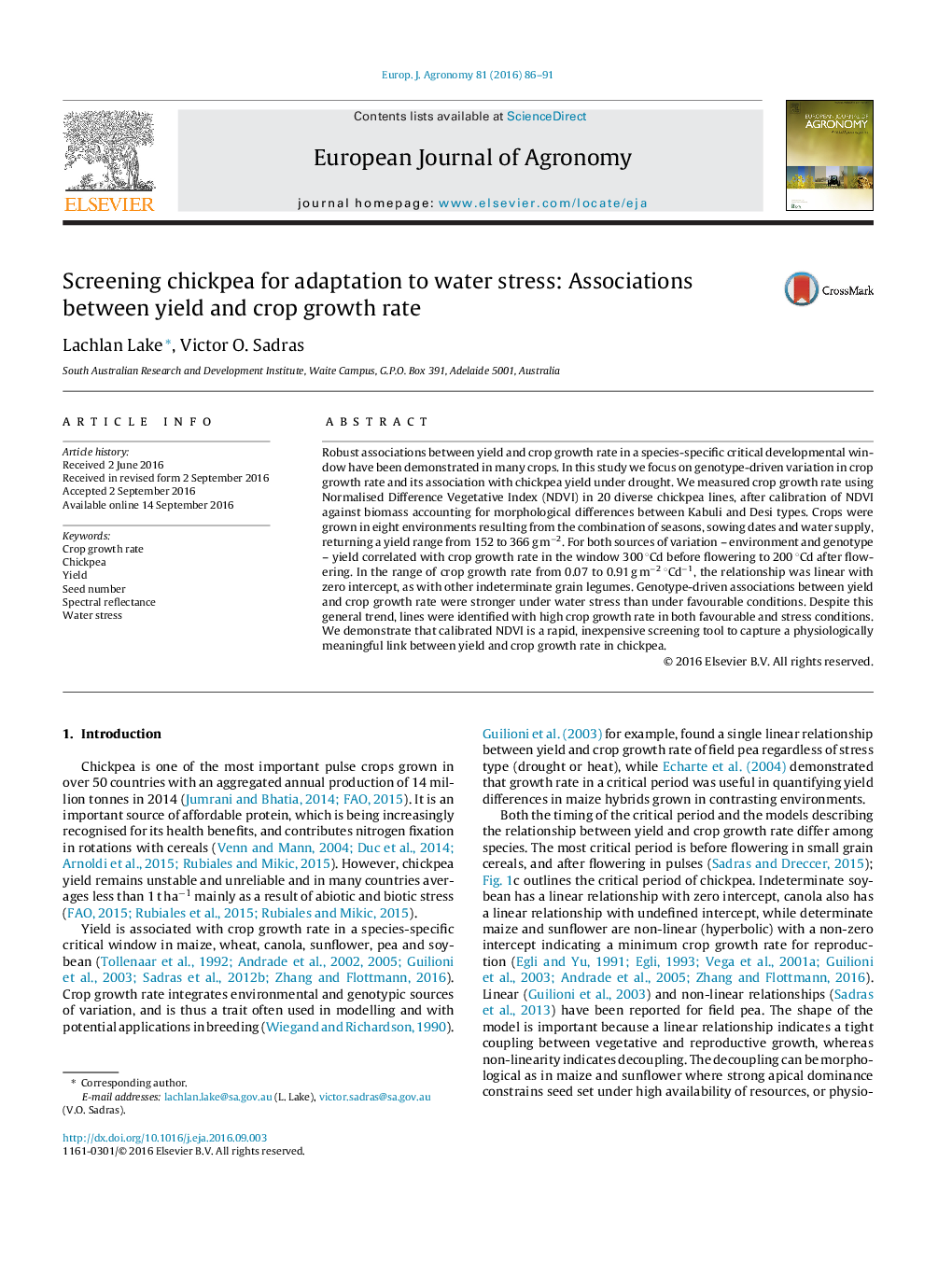| Article ID | Journal | Published Year | Pages | File Type |
|---|---|---|---|---|
| 4508659 | European Journal of Agronomy | 2016 | 6 Pages |
•Crop growth rate measured for 20 chickpea lines in eight contrasting environments.•Crop growth measured using Normalized Difference Vegetative Index method.•Yield correlates with crop growth rate within the species specific critical period.•Strongest correlation between yield and crop growth rate in stressful environments.
Robust associations between yield and crop growth rate in a species-specific critical developmental window have been demonstrated in many crops. In this study we focus on genotype-driven variation in crop growth rate and its association with chickpea yield under drought. We measured crop growth rate using Normalised Difference Vegetative Index (NDVI) in 20 diverse chickpea lines, after calibration of NDVI against biomass accounting for morphological differences between Kabuli and Desi types. Crops were grown in eight environments resulting from the combination of seasons, sowing dates and water supply, returning a yield range from 152 to 366 g m−2. For both sources of variation – environment and genotype – yield correlated with crop growth rate in the window 300 °Cd before flowering to 200 °Cd after flowering. In the range of crop growth rate from 0.07 to 0.91 g m−2 °Cd−1, the relationship was linear with zero intercept, as with other indeterminate grain legumes. Genotype-driven associations between yield and crop growth rate were stronger under water stress than under favourable conditions. Despite this general trend, lines were identified with high crop growth rate in both favourable and stress conditions. We demonstrate that calibrated NDVI is a rapid, inexpensive screening tool to capture a physiologically meaningful link between yield and crop growth rate in chickpea.
